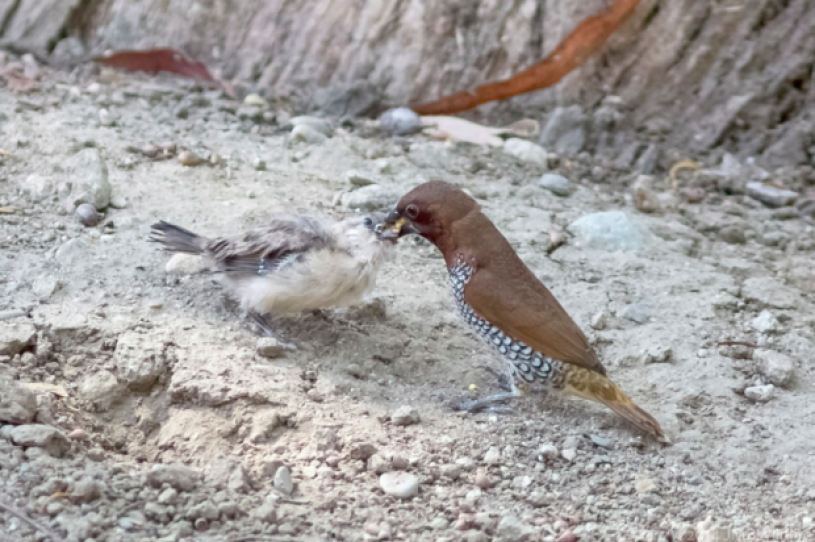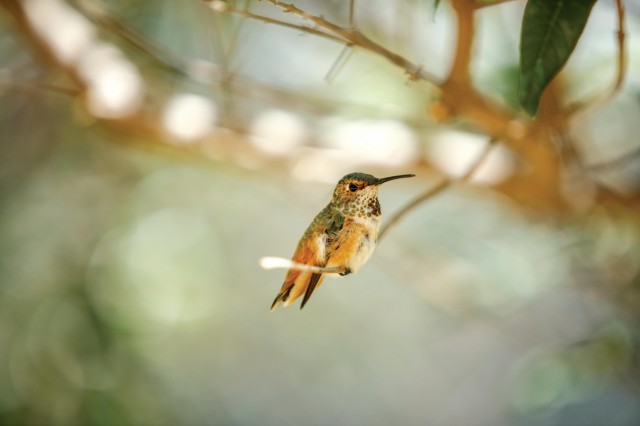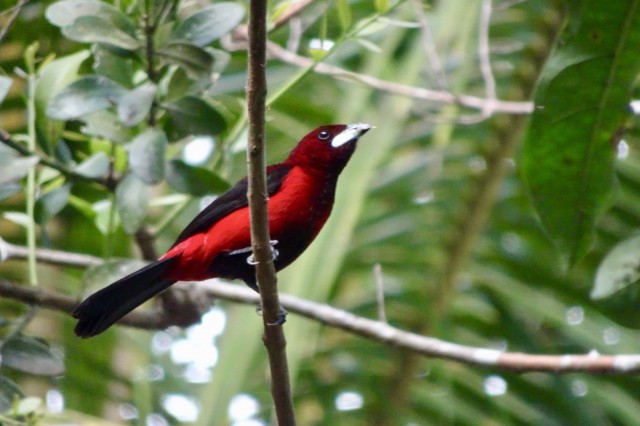Parasitic Birds Have a Choice to Make
Non-native pin-tailed whydahs sneak their eggs into other birds' nests to survive, but what happens when a bird from their native habitat roosts in Los Angeles?
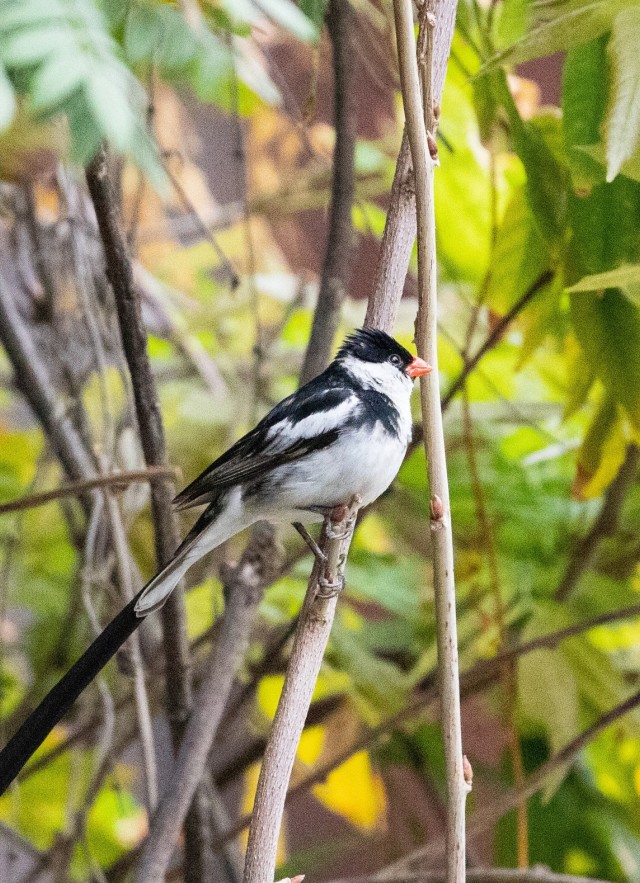
By: Katie McKissick
Originally published on July 6th, 2016
Los Angeles is home to introduced species from all over the world. There are Cuban lizards in Echo Park, European slugs in our gardens, and Mediterranean flies in our orchards. But have you heard the one about non-native parasitic birds?
Pin-tailed whydahs are from Africa, but — thanks to the pet trade — are becoming common in Southern California. These birds are obligate brood parasites, which means they can’t build their own nests, so to reproduce, they stealthily lay their eggs in other birds’ nests and, let these unwitting adopted parents raise their young.
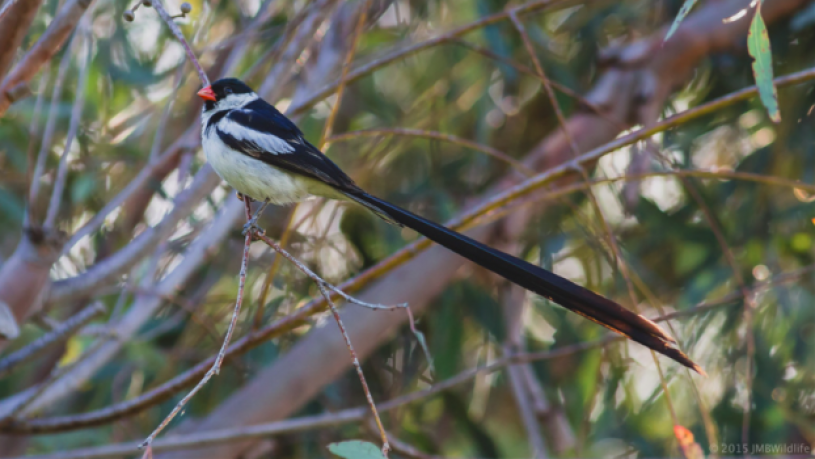
Unfortunately for the host birds who wind up with whydah eggs in their nests, it’s a pretty thankless job. They raise babies that aren’t theirs, sometimes to the detriment of their biological children. For busy parents, there is only so much food and attention to go around.
Back home in Africa, pin-tailed whydahs take advantage of waxbill birds, seeking out their domed nests to lay their eggs. But here in Los Angeles, how are the pin-tailed whydahs managing to reproduce? What hapless bird is hosting these feathered parasites?
In an interesting urban nature twist, these introduced whydahs are parasitizing another species of introduced bird. Scaly-breasted munias from southeast Asia are playing host bird for the whydahs, whether they like it or not.
This novel relationship was documented recently by Pasadena Audubon member and NHM volunteer John Garrett, NHM Ornithology Collections Manager Kimball Garrett (no relation), and photographer Jeff Bray.
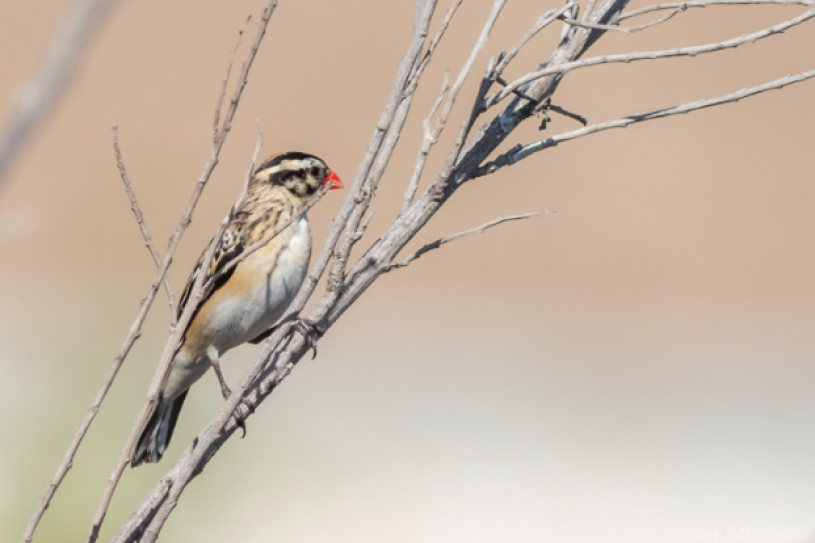
So how does this play out in the annals of L.A. urban nature? Is it good that an introduced parasite is going after another non-native species? Is the enemy of our enemy our friend? Nothing is ever quite so simple when ecology is concerned, so the long-term ramifications of this new relationship are unclear.
But wait, there’s more.
Yet another introduced bird is now in the mix. Orange-cheeked waxbills have arrived, one of the pin-tailed whydahs known host birds from Africa. Will the whydahs defer to their native host, or will they stay with their newly adopted host?
“We need to keep doing fieldwork and rely also on birders and other citizen scientists to keep us apprised of what is going on,” said Kimball Garrett.
You can be a part of this urban nature drama series. Below are some of the known hangouts of pin-tailed whydahs around Southern California:
Los Angeles County
- Viña Vieja Park in Pasadena
- Whittier Narrows
- Rio Hondo in South El Monte
- La Mirada Park and La Mirada Creek Park
Orange County
- Craig Regional Park in Fullerton
- Arovista Park in Brea
- Santa Ana River from Lincoln Avenue to Tustin Avenue in Orange
- Yorba Regional Park in Anaheim
- Mile Square Regional Park in Fountain Valley
- Gilman Park in Fullerton
- Huntington Central Park in Huntington Beach
- San Joaquin Marsh in Irvine
If you see pin-tailed whydahs entering birds’ nests or young whydahs being cared for by other birds, take a picture or jot down some notes and send them to nature@nhm.org, upload observations to eBird, or iNaturalist.
Watch out for those whydahs!
